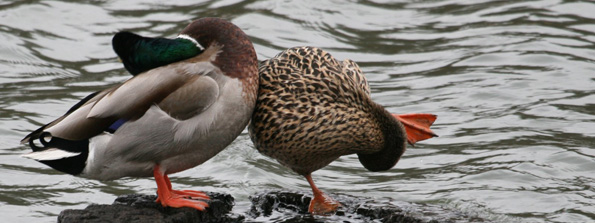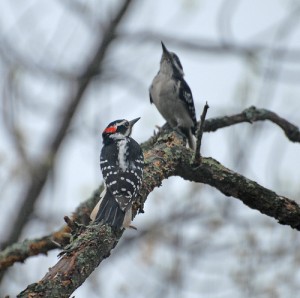
Bird Courtship Rituals
Understanding bird courtship behavior can help birders recognize how birds act in their backyard, and with practice it is possible to identify birds based on their mating behavior.

Bird Courtship Behavior
The ultimate purpose of courtship is to attract a receptive mate, but there are actually several other purposes behind the courtship behavior of different bird species. The intricate moves of a courtship dance and the recognizable bird sounds and songs used to attract mates can help distinguish species so birds are sure to choose compatible mates. Different courtship behaviors also serve to reduce territorial aggression between birds, letting them relax together to form a pair bond. Depending on the type of behavior, how the birds react in courtship can also display strength, health and mating desirability, allowing different birds to choose the best partners and ensure viable offspring.
Bird Courtship Rituals
There are several different types of courtship rituals that birds use for finding a mate. Most species will use several methods, but they can vary greatly between different birds.
- Singing: Singing is one of the most common ways birds can attract a mate. The intricacy of the song, or the variety of different songs one bird can produce, help to advertise its maturity and intelligence – desirable characteristics for a healthy mate. Singing also advertises the boundaries of one bird’s territory, warning off the competition. For some species, only one gender (usually the males) will sing, while others may sing a duet as part of their bonding.
- Displays: Flamboyant plumage colors and elaborate displays of prominent feathers, skin sacs or body shape can show off how strong and healthy a bird is, advertising its suitability as a mate.
- Dancing: Physical movements, from daring dives to intricate sequences including wing flaps, head dips, or different steps can be part of a courtship ritual. In many species, the male alone will dance for his female while she observes his actions, while in other species both partners will interact with one another. Dance mistakes show inexperience or hesitancy and would likely not lead to a successful mating.
- Preening: Close contact between male and female birds can be part of the courtship rituals to help diffuse their normal spatial boundaries and aggression. The birds may lightly preen one another, sit with their bodies touching or otherwise lean on one another to show that they are not intending to harm their partner.
- Feeding: Offering food is another common part of the bird courtship behavior for many species. The male bird may bring a morsel to the female, demonstrating that he is not only able to find food, but he can share it and is able to provide for her while she incubates eggs or tends the brood. With some species, the male may just bring food and transfer it to the female for her to feed, while in other species, he will place a seed or insect directly in her mouth just as he might be expected to do when helping feed hungry nestlings.
- Building: Some birds seek to attract a mate by showing off their architectural skills. Constructing nests before the female arrives is a way for males to claim territory and show the suitable nesting areas they can defend. They may also decorate the nest with pebbles, moss, flowers or even litter to make it more eye-catching. The female may then choose the nest she prefers, or she may still build her own after mating with her chosen male.
There are many ways that birds seek to attract a mate, and understanding bird courtship behavior can help birders better appreciate the complexity of the bird relationships forming in their backyard.

